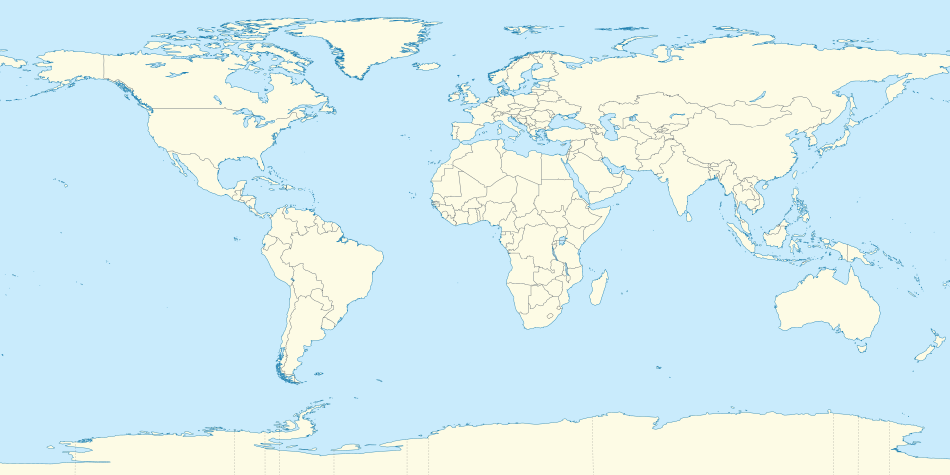
The Commonwealth Games is a quadrennial international multi-sport event among athletes from the Commonwealth of Nations, which consists mostly, but not exclusively, of territories of the former British Empire. The event was first held in 1930 as the British Empire Games and, with the exception of 1942 and 1946, has successively run every four years since. The event was called the British Empire Games from 1930 to 1950, the British Empire and Commonwealth Games from 1954 to 1966, and the British Commonwealth Games from 1970 to 1974. The event removed the word British from its title for the 1978 Games and has maintained its current name ever since.

The 1964 Summer Paralympics, originally known as the 13th International Stoke Mandeville Games and also known as Paralympic Tokyo 1964, were the second Paralympic Games to be held. They were held in Tokyo, Japan, and were the last Summer Paralympics to take place in the same city as the Summer Olympics until the 1988 Summer Paralympics.
Francis Ettore Ponta was an Australian Paralympic competitor and coach. He competed in several sports including basketball, pentathlon, swimming and fencing. A paraplegic, he lost the use of both his legs after a tumour was removed from his spinal column when he was a teenager. Ponta was a member of Australia's first national wheelchair basketball team, and is credited with expanding the sport of wheelchair basketball in Western Australia. At the end of his competitive career, he became a coach, working with athletes such as Louise Sauvage, Priya Cooper, Madison de Rozario, Bruce Wallrodt and Bryan Stitfall. He died on 1 June 2011 at the age of 75 after a long illness.
The 1968 Summer Paralympics was an international multi-sport event held in Tel Aviv, Israel, from November 4 to 13, 1968, in which athletes with physical disabilities competed against one another. The Paralympics are run in parallel with the Olympic Games; these Games were originally planned to be held alongside the 1968 Summer Olympics in Mexico City, but two years prior to the event the Mexican government pulled out due to technical difficulties. At the time, the event was known as the 17th International Stoke Mandeville Games. The Stoke Mandeville Games were a forerunner to the Paralympics first organized by Sir Ludwig Guttmann in 1948. This medal table ranks the competing National Paralympic Committees (NPCs) by the number of gold medals won by their athletes.

Australia competed at the 1968 Summer Paralympics in Tel Aviv, Israel. The Games significantly expanded in 1968 when compared to previous years, as did the Australian team and the events included in the Games. Mexico City were originally to host the 1968 Paralympics, however, they were moved to Tel Aviv in Israel.
Sir George Montario Bedbrook, OBE was an Australian medical doctor and surgeon, who was the driving force in creating the Australian Paralympic movement and the Commonwealth Paraplegic Games, and helped to found the FESPIC Games.
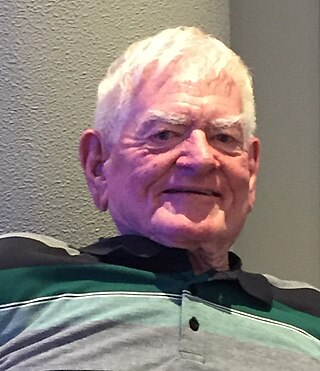
William "Bill" Edgar Mather-Brown is an Australian Paralympian. He was born in the Western Australian city of Fremantle in 1936. At the age of two, he contracted polio in the town of Agnew in the Goldfields-Esperance region, northeast of Kalgoorlie. He spent two years in Kalgoorlie Hospital before moving back to Perth. He married Nadine Vine, who attended the 1972 Heidelberg Games as a team nurse.

Bruno Moretti was an Australian Paralympic competitor.
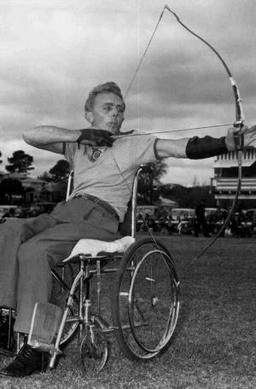
Ross Edward Sutton was the first Australian Paralympic gold medallist. He represented Australia in archery at the 1960 Summer Paralympics in Rome, Italy and dartchery and fencing at the 1962 Commonwealth Paraplegic Games in Perth, Western Australia. Sutton also competed in table tennis at the Second National Paraplegic Games.
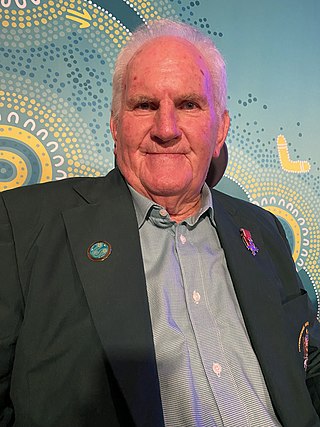
Gary Leslie Hooper, MBE is an Australian Paralympic competitor. He won seven medals at three Paralympics from 1960 to 1968.

Also known as the 13th Stoke Mandeville Games, the 1964 Summer Paralympics was the 2nd Paralympic Games. Hosted in Tokyo, the games ran from 8 to 12 November. Australia won a total of 30 medals and finished fourth on the medal tally behind Italy (3rd), Great Britain (2nd) and the United States (1st). Australia competed in 6 of the 9 sports at the Games, winning medals in each of those sports, but was most successful in the pool, winning a majority of their medals in swimming events.

The 2nd FESPIC Games was a multi-sport event for Far East and South Pacific athletes with a disability held in Parramatta, Australia.

The 13th International Stoke Mandeville Games, later known as the 1964 Summer Paralympics, was an international multi-sport event held in Tokyo, Japan, from November 3 to 12, 1964, in which paraplegic and tetraplegic athletes competed against one another. The Stoke Mandeville Games were a forerunner to the Paralympics first organized by Sir Ludwig Guttmann in 1948. This medal table ranks the competing National Paralympic Committees (NPCs) by the number of gold medals won by their athletes.
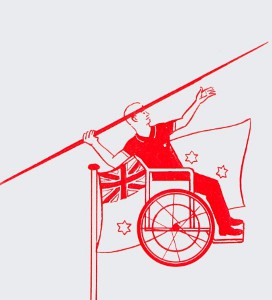
The First Commonwealth Paraplegic Games were held in Perth, Western Australia, from 10 to 17 November 1962. These Games preceded the 1962 British Empire and Commonwealth Games which were held in Perth from 22 November to 1 December of that year. The Commonwealth Paraplegic Games were conceived by George Bedbrook after Perth won the right to host the Commonwealth Games. Great support was received from Royal Perth Hospital, a leading spinal rehabilitation centre in Australia.
At the 1962 Commonwealth Paraplegic Games in Perth, Western Australia eighty nine athletes from nine countries competed in fourteen events.
Bruce Oliver Thwaite was an Australian Paralympic competitor. During World War II, he sustained a spinal injury when he landed on a tree after parachuting from a bomber plane over Germany. He was treated at the Stoke Mandeville Hospital.

Anthony Eric "Tony" South OAM AM is an Australian Paralympic archer who won a gold medal and two silver medals at the 1968 Summer Paralympics and a bronze medal at the 1972 Summer Paralympics.
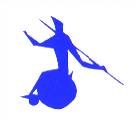
The Third Commonwealth Paraplegic Games was a multi-sport event that was held in Edinburgh, Scotland from 26 July to 1 August 1970. Dubbed the "little games", they followed the 1970 British Commonwealth Games which were held in Edinburgh from 16 to 25 July of that year.

The second Commonwealth Paraplegic Games were held in Kingston, Jamaica from 14 to 20 August 1966. There were 133 athletes from 10 countries. The Games were opened by Prince Philip.

The fourth Commonwealth Paraplegic Games were held in Dunedin, New Zealand from 13 to 19 January 1974. The Games were opened by Sir Denis Blundell, Governor-General of New Zealand.



